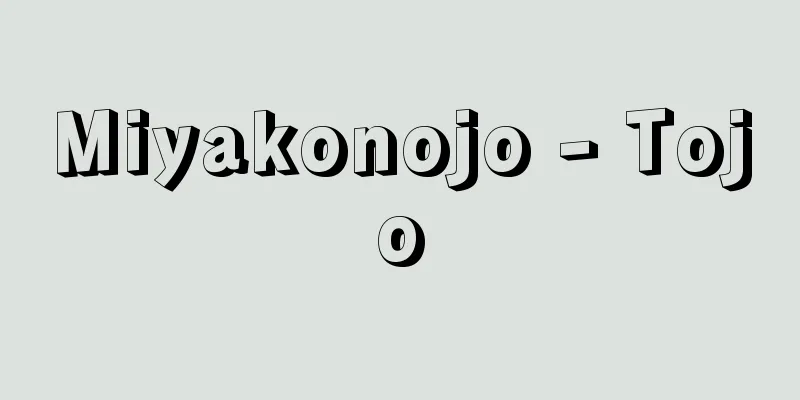Food additives

|
The Food Sanitation Law defines additives as "substances that are added to, mixed with, infiltrated into, or used by other means in the process of manufacturing food or for the purpose of processing or preserving food" (Article 4, Paragraph 2). As of 2006, there are 360 chemically synthesized products and approximately 1,200 natural products. Natural products are divided into three categories: existing food additives (450 items), natural flavorings (approximately 600 items), and general foods and beverages used as additives (approximately 100 items). With the exception of natural flavorings and additives used as additives in general foods and beverages, the law stipulates that additives may only be sold, processed, used, stored, imported, and displayed in cases where "they are not likely to be harmful to human health and are determined by the Minister of Health, Labour and Welfare after hearing the opinion of the Pharmaceutical Affairs and Food Sanitation Council" (Article 10). Additionally, Article 11 stipulates that the Minister of Health, Labour and Welfare "may, from the standpoint of public health, and after hearing the opinion of the Pharmaceutical Affairs and Food Sanitation Council, establish standards for the methods of manufacturing, processing, use, preparation or storage of food or food additives to be offered for sale, or may establish specifications for the ingredients of food or food additives to be offered for sale." [Tomomi Kono and Yonago Yamaguchi] kindsAdditives can be classified by their use into sweeteners, coloring agents, preservatives, antioxidants, thickening agents (thickening agents, stabilizers or gelling agents), colorants, bleaching agents, mold inhibitors, yeast food, kansui, gum base, flavorings, acidulants, seasonings, tofu coagulants (coagulants), chewing gum softeners, emulsifiers, pH adjusters, leavening agents, bittering agents, enzymes, glazing agents, strengthening agents, bactericides, binding agents, moisturizers, water retention agents, flour improvers, manufacturing agents, brewing agents, coating agents, quality improvers, quality preserving agents, extractants, adsorbents, color stabilizers, solvents, antifoaming agents, anti-caking agents, insect repellents, fermentation regulators and release agents. The main ones are explained below. [Tomomi Kono and Yonago Yamaguchi] sweetenerAdditives used to add sweetness. Chemically synthesized products include saccharin, saccharin sodium, aspartame, and sorbitol, while natural products include stevia extract and licorice extract. Some additives are not only sweet, but also have low energy and low cariogenic properties. [Tomomi Kono and Yonago Yamaguchi] ColoringUsed to add color to food. Chemically synthesized products include tar-based dyes and their aluminum lakes, sodium iron chlorophyllin, sodium copper chlorophyllin, etc. Natural products include natural additives such as caramel, turmeric coloring, and red cabbage coloring, as well as common food and drink additives such as matcha. [Tomomi Kono and Yonago Yamaguchi] PreservativesAdditives used to preserve food. Chemically synthesized products include sorbic acid and its potassium salt, and benzoic acid and its sodium salt, while natural products include Aralia aralia extract and pectin hydrolysate. Bleaching agents such as sodium sulfite are also used for preservation purposes. [Tomomi Kono and Yonago Yamaguchi] AntioxidantsIn foods with a high fat content, oil products, and foods containing vitamins A and D, fats and other ingredients oxidize during storage, often causing a loss of flavor and negative health effects. To prevent this, antioxidants are permitted as food additives. Antioxidants include chemically synthesized products such as ascorbic acid, erythorbic acid, BHA, BHT, and dl -α-tocopherol (vitamin E), as well as many natural products such as sesamol and tea extract. [Tomomi Kono and Yonago Yamaguchi] AdhesiveAdditives are added to foods to increase smoothness and viscosity, stabilize emulsions, form jellies, etc. They are labeled as stabilizers in ice cream and dressings, thickeners in ketchup and sauces, and gelling agents in jams and jellies. Chemically synthesized products include alginates and methylcellulose, while natural products include alginic acid and pectin. [Tomomi Kono and Yonago Yamaguchi] Color formerAn additive intended to stabilize food colorings, such as to make processed meat products more colorful. When used in processed meat products such as ham and sausages, fish products, and ingredients such as salmon roe and cod roe, it stabilizes the colorings and prevents browning due to heating. There are three types of chemically synthesized additives: sodium nitrite, potassium nitrate, and sodium nitrate. Sodium nitrite plays a major role in preventing the food poisoning bacteria Clostridium botulinum. [Tomomi Kono and Yonago Yamaguchi] BleachThese are used for bleaching purposes, and many are also used as preservatives and antioxidants. These include the chemically synthesized sodium sulfite, sodium hyposulfite, and sulfur dioxide, and are used in a wide range of products, including peeled shrimp, gelatin, konjac powder, dried fruit, boiled beans, kanpyo (dried gourd), and butterbur, as well as cherries and other processed fruit products. However, most bleaching agents are prohibited from being used on sesame seeds, beans, and vegetables. [Tomomi Kono and Yonago Yamaguchi] FragrancesUsed to flavor and eliminate odors in food. Active ingredients such as orange oil are extracted from natural products, and some are chemically synthesized. Fragrances can be classified based on their form into water-soluble fragrances called essences, oil-based fragrances in which the aromatic components of essences are dissolved in propylene glycol, emulsion fragrances also known as cloudy fragrances in which the fragrance components are dispersed and emulsified in water using an emulsifier, and powder fragrances in which the fragrance components are made into an emulsion, to which excipients such as vegetable gum are added and spray-dried. [Tomomi Kono and Yonago Yamaguchi] seasoningThese are used to give foods an umami taste or improve their flavor. Acidulants, sweeteners, and bitter agents are additives that add flavor, but are categorized separately. Chemically synthesized products include L-glutamic acid, L-sodium glutamate, 5'-sodium inosinate, and 5'-sodium guanylate. Natural products include taurine and asparagine. Acidulants such as succinic acid are also used to improve flavor. [Tomomi Kono and Yonago Yamaguchi] emulsifierA food additive that emulsifies oil and water. In addition to emulsifying, it also has foaming and penetration functions. It is widely used in the manufacture of margarine, ice cream, dressings, shortening, etc. Chemically synthesized products include glycerin fatty acid esters, sucrose fatty acid esters, and propylene glycol fatty acid esters, while natural products include lecithin and soybean saponin. [Tomomi Kono and Yonago Yamaguchi] ReinforcementSupplementing nutrients that are often lacking is called food fortification, and there are vitamins, minerals, amino acids, etc. that are added for this purpose. Examples of types and uses include vitamin A (margarine), vitamin B1 (rice, flour), vitamin B2 (miso), vitamin C (sweets, fruit juice), calcium compounds (dairy products, sweets), etc. [Tomomi Kono and Yonago Yamaguchi] DisinfectantThese are primarily used for sterilization purposes, such as for sterilizing vegetables, fruits, utensils, containers, tableware, etc. Examples include highly bleached powder, hydrogen peroxide, and hypochlorous acid. These must be decomposed and removed before the final product is completed, and therefore are exempt from labeling. [Tomomi Kono and Yonago Yamaguchi] Manufacturing AgentsPhosphates used in food manufacturing have an effect on products. Chemically synthesized products include phosphates as binding agents and potassium bromate as a flour improver, natural products include activated carbon and tannin, and general foods and beverages include ethanol and egg white. Phosphates as binding agents are divided into groups such as pyrophosphates, polyphosphates, metaphosphates, and phosphates. All of these have a wide range of uses when present in food, including preventing browning during processing, turning poorly or insoluble substances into a stable suspension, preventing the formation of precipitates, binding meat, retaining water, increasing the viscosity of aqueous solutions, and preventing changes due to freezing. For this reason, they are added to many processed foods, including processed meat products such as ham and sausages, fish paste products such as chikuwa and kamaboko, frozen surimi that is the raw material for these products, soft drinks, miso, ice cream, and cheese. Potassium bromate, a flour improver, improves the properties of gluten and makes bread finer. [Tomomi Kono and Yonago Yamaguchi] SafetySince food additives are ingested every day with food, they must not only not be acutely toxic, but also must not pose any risk of chronic toxicity, carcinogenicity, or allergies even when ingested over a long period of time. When designating an additive, in addition to general toxicity tests in animal tests, safety evaluations are required through reproduction tests, carcinogenicity tests, teratogenicity tests, antigenicity tests, mutagenicity tests, general pharmacology tests, and pharmacokinetic tests. However, there are still unresolved aspects regarding safety, such as toxicity due to complex contamination and insufficient toxicity test data for some items. For this reason, it is necessary to have a diet that does not rely excessively on additives. Regulations on food additives vary from country to country, but global standards and usage criteria have been established by the Codex Alimentarius Commission, a joint effort of the World Health Organization (WHO) and the Food and Agriculture Organization of the United Nations (FAO). [Tomomi Kono and Yonago Yamaguchi] display Since the 1989 (Heisei 1) amendment to the Ministry of Health, Labor and Welfare ordinance, all additives used in food have been listed in principle. In actual labeling, in addition to the method of listing only the substance name, [Tomomi Kono and Yonago Yamaguchi] "Food Additives Official Codex, 7th Edition," edited by the Ministry of Health, Labor and Welfare (1999, Japan Food Additives Association)" ▽ "Food Additives in Everyday Life, Editorial Committee of the Japan Food Additives Association, ed., "Understanding Food Additives in Everyday Life," (2000, Koseikan)" ▽ "A Book for Properly Understanding Food Additives -- Q&A File 101," by Omi Kunio, Yamada Takashi, and Nishijima Motohiro (2002, Industrial Research Institute)" ▽ "Food Additives Index -- Japanese Names, English Names, and ENo. Search Handbook," edited by the Japan Imported Food Safety Promotion Association (2002, Chuohoki Publishing)" ▽ "An Even Easier Guide to Food Additives," by Yukawa Muneaki (2004, Food Chemistry Newspaper Co.)" ▽ "An Overview of Food Additives in the World: JECFA and List of Approved Items in Major Countries," edited and published by the Japan Food Additives Association (2004)" ▽ "Food Additives Handbook," edited and published by Food and Science Publishing Co. 2005 Edition (2005)" ▽ "Food Additives Usage Standards Handbook, Revised Edition, 38th Edition (2005, Japan Food Sanitation Association), supervised by the Food Sanitation Research Association" [References] | | | | | | | | | | | |Source: Shogakukan Encyclopedia Nipponica About Encyclopedia Nipponica Information | Legend |
|
食品衛生法において、「食品の製造の過程において又は食品の加工若(も)しくは保存の目的で、食品に添加、混和、浸潤その他の方法によつて使用する物」(4条2項)と定義されているもの。2006年(平成18)現在360品目の化学的合成品と、約1200品目の天然物がある。天然物は既存添加物(450品目)、天然香料(約600品目)、添加物として使用される一般飲食物(約100品目)の三つに分類される。このうち天然香料と一般飲食物で添加物として使用されているものを除くほかの添加物については、「人の健康を損なうおそれのない場合として厚生労働大臣が薬事・食品衛生審議会の意見を聴いて定める場合」(10条)にだけ販売や加工、使用、貯蔵、輸入、陳列などをしてよいと規定されている。また、厚生労働大臣が「公衆衛生の見地から、薬事・食品衛生審議会の意見を聴いて、販売の用に供する食品若しくは添加物の製造、加工、使用、調理若しくは保存の方法につき基準を定め、又は販売の用に供する食品若しくは添加物の成分につき規格を定めることができる」(11条)と規定している。 [河野友美・山口米子] 種類添加物を用途から分類すると、甘味料、着色料、保存料、酸化防止剤、糊料(こりょう)(増粘剤、安定剤またはゲル化剤)、発色剤、漂白剤、防かび剤、イーストフード、梘水(かんすい)、ガムベース、香料、酸味料、調味料、豆腐用凝固剤(凝固剤)、チューインガム軟化剤、乳化剤、pH調整剤、膨張剤、苦味料、酵素、光沢剤、強化剤、殺菌料、結着剤、保湿剤、保水剤、小麦粉改良剤、製造用剤、醸造用剤、皮膜剤、品質改良剤、品質保持剤、抽出剤、吸着剤、色調安定剤、溶剤、消泡剤、固結防止剤、防虫剤、発酵調整剤、離型剤などがあり、おもなものを次に説明する。 [河野友美・山口米子] 甘味料甘味をつけるための添加物。化学的合成品にはサッカリン、サッカリンナトリウム、アスパルテーム、ソルビトールなど、天然物にはステビア抽出物、甘草(かんぞう)抽出物などがある。甘味をもつだけでなく低エネルギー性や低う触性を特性とするものもある。 [河野友美・山口米子] 着色料食品に色をつけるためのもの。化学的合成品にはタール系色素とそのアルミニウムレーキ、鉄クロロフィリンナトリウム、銅クロロフィリンナトリウムなど、天然物にはカラメル、ウコン色素、赤キャベツ色素などの天然添加物と抹茶などの一般飲食物添加物とがある。 [河野友美・山口米子] 保存料食品の保存を目的とする添加物。化学的合成品にはソルビン酸とそのカリウム塩、安息香酸とそのナトリウム塩など、天然物にはウド抽出物、ペクチン分解物などがある。また、亜硫酸ナトリウムなどの漂白剤も保存の目的で用いられる。 [河野友美・山口米子] 酸化防止剤脂肪分の多い食品や油脂製品、ビタミンA・Dなどを含むものでは、保存する場合に脂肪などの成分が酸化し、食品の風味低下や、健康上よくない影響を与えることが多い。これを防止するために酸化防止剤が食品添加物として許可されている。酸化防止剤にはアスコルビン酸、エリソルビン酸、BHA、BHT、dl-α-トコフェロール(ビタミンE)などの化学的合成品と、セサモール、茶抽出物など多くの天然物がある。 [河野友美・山口米子] 糊料食品に加えて滑らかさや粘性を増したり、乳化の安定、ゼリーの形成などの目的に使われる添加物。アイスクリームやドレッシングなどでは安定剤、ケチャップやソースなどでは増粘剤、ジャムやゼリーではゲル化剤と表示される。化学的合成品にはアルギン酸塩類、メチルセルロースなど、天然物にはアルギン酸やペクチンなどがある。 [河野友美・山口米子] 発色剤肉の加工品の色をきれいに発色させるなど食品中の色素を安定にすることを目的とした添加物。ハム、ソーセージなどの肉の加工品や魚肉製品、イクラやたらこなどの原料に使用すると色素が安定化して加熱による褐変を防ぐことができる。化学的合成品の亜硝酸ナトリウム、硝酸カリウム、硝酸ナトリウムの3種類があり、亜硝酸ナトリウムは食中毒菌であるボツリヌス菌の対策としての役割が大きい。 [河野友美・山口米子] 漂白剤漂白の目的で使用されるもので、多くは保存料、酸化防止剤としても使用される。化学合成品の亜硫酸ナトリウム、次亜硫酸ナトリウム、二酸化硫黄(いおう)などがあり、エビのむき身、ゼラチン、こんにゃく粉、乾燥果実、煮豆、かんぴょう、フキをはじめ、サクランボその他の果実加工品など、かなり使用範囲が広いが、ほとんどの漂白剤はゴマ、豆類、野菜には使用が禁止されている。 [河野友美・山口米子] 香料食品の香りづけ、におい消しに用いられるもの。オレンジ油など有効成分を天然品から抽出したものと、化学的に合成したものとがある。香料を形態から分類すると、水溶性の香料でエッセンスとよばれるもの、エッセンスの芳香成分をプロピレングリコールなどに溶かした油性香料、香料成分を乳化剤を用いて水中に分散乳化させたクラウディーともよばれる乳化香料、香料成分を乳化液にして、これに植物性ゴム質などの賦形剤を加えて噴霧乾燥した粉末香料などがある。 [河野友美・山口米子] 調味料食品にうま味をつけたり味を向上させるために用いるもの。酸味料、甘味料、苦味料は味をつける添加物であるが、別に区分されている。化学的合成品にはL-グルタミン酸、L-グルタミン酸ナトリウム、5'-イノシン酸ナトリウム、5'-グアニル酸ナトリウムなどがある。天然物にはタウリン、アスパラギンなどがある。また、コハク酸などの酸味料も味の向上を目的に使用されている。 [河野友美・山口米子] 乳化剤油と水を乳化する作用をもつ食品添加物をいう。乳化の目的のほか、起泡、浸透などの働きもある。マーガリン、アイスクリーム、ドレッシング、ショートニングの製造などに広く利用されている。化学合成品にはグリセリン脂肪酸エステル、ショ糖脂肪酸エステル、プロピレングリコール脂肪酸エステルなど、天然物にはレシチン、大豆サポニンなどがある。 [河野友美・山口米子] 強化剤不足しがちの栄養素を補うことを食品の強化といい、この目的で添加するビタミン、無機質、アミノ酸などがある。種類および使用例としては、ビタミンA(マーガリン)、ビタミンB1(米、小麦粉)、ビタミンB2(みそ)、ビタミンC(菓子、果汁)、カルシウム化合物(乳製品、菓子)などがある。 [河野友美・山口米子] 殺菌料主として殺菌の目的で用いられるもので、野菜、果実、器具、容器、食器などの殺菌用として使用される。高度さらし粉、過酸化水素、次亜塩素酸などが用いられる。最終製品の完成前に分解、除去しなければならず、そのため表示は免除される。 [河野友美・山口米子] 製造用剤食品製造時に使用して製品に効果をもたらすもの。化学的合成品には結着剤としてのリン酸塩類と、小麦粉改良剤としての臭素酸カリウムなど、天然物には活性炭、タンニンなど、一般飲食物にはエタノール、卵白などがある。結着剤としてのリン酸塩は、ピロリン酸塩、ポリリン酸塩、メタリン酸塩、リン酸塩などのグループがある。いずれも、食品中にあると、加工時に作用して褐変(かっぺん)の防止、水に溶けにくい物質や溶けない物質を安定性のよい懸濁(けんだく)液にする、沈殿物ができるのを防ぐ、肉類などの結着、保水、水溶液の粘性増加、冷凍による変化の防止など、実に広い用途をもっている。このため、ハム、ソーセージのような食肉加工品、ちくわ、かまぼこのような魚肉練り製品、その原料となる冷凍すり身、清涼飲料、みそ、アイスクリーム、チーズなど多くの加工食品に添加する。小麦粉改良剤の臭素酸カリウムは、グルテンの性質をよくしてパンのきめを細かくする。 [河野友美・山口米子] 安全性食品添加物は食品とともに毎日摂取されるので、急性毒性がないことはもちろん、長期にわたって摂取した場合でも、慢性毒性や発癌性(はつがんせい)、アレルギー性などのおそれがあってはならない。添加物の指定にあたっては動物試験による一般毒性試験のほかに、繁殖試験、発癌性試験、催奇形性試験、抗原性試験、変異原性試験、一般薬理性試験、体内動態試験などによって安全性の評価を義務づけている。しかし、その安全性については、複合汚染による毒性や、品目によっては毒性試験データが不十分といった未解決の部分がある。そのため、過度に添加物に依存しない食生活にすることが必要である。 添加物の規定は国によって差があったが、WHO(世界保健機関)とFAO(国連食糧農業機関)の合同によるコーデックス委員会によって、世界共通の規格や使用基準がつくられている。 [河野友美・山口米子] 表示1989年(平成1)の厚生省令改正より、食品に使用した添加物は原則としてすべてのものが表示されるようになった。実際の表示においては、物質名だけの表示方法以外に、 [河野友美・山口米子] 『厚生省編『食品添加物公定書第7版』(1999・日本食品添加物協会)』▽『日本食品添加物協会暮しのなかの食品添加物編集委員会編『よくわかる暮しのなかの食品添加物』(2000・光生館)』▽『小見邦雄・山田隆・西島基弘著『食品添加物を正しく理解する本――Q&Aファイル101』(2002・工業調査会)』▽『日本輸入食品安全推進協会編著『食品添加物インデックス――和名・英名・ENo.検索便覧』(2002・中央法規出版)』▽『湯川宗昭著『さらにやさしい食品添加物』(2004・食品化学新聞社)』▽『日本食品添加物協会編・刊『世界の食品添加物概説 JECFAと主要国の認可品目リスト』(2004)』▽『食品と科学社編・刊『食品添加物便覧 2005年版』(2005)』▽『食品衛生研究会監修『食品添加物の使用基準便覧 新訂版』第38版(2005・日本食品衛生協会)』 [参照項目] | | | | | | | | | | | |出典 小学館 日本大百科全書(ニッポニカ)日本大百科全書(ニッポニカ)について 情報 | 凡例 |
Recommend
Byzantion
...Population: 7,616,000 (1994). In ancient Greec...
Endowment insurance - Yorohoken
A type of life insurance that pays the same amoun...
Baltoro Glacier
A large glacier in the Karakoram region of Pakist...
Yoshinari Kawai - Yoshinari Kawai
Born: May 10, 1886 in Toyama [Died] May 14, 1970. ...
Owlet‐frogmouth (Owlet‐frogmouth)
A general term for birds in the Aegothelidae famil...
Zen Master Ohara
...One is related to the dragon god (snake), and ...
Plastic composite materials
A composite material in which the continuous phase...
Hugues Panassié (English spelling)
...In 1919, Swiss conductor Ansermet contributed ...
Meduna, LIvon (English spelling) Meduna LIvon
…It was discovered that repeated subcutaneous or ...
Absorption relationship
For example, cases that fall under both breach of...
Gaillardia
Also known as Gaillardia. A spring-sown annual pla...
Mussel (Mytilus coruscus) (Mytilus crassitesta)
A black bivalve mollusk that grows in colonies on ...
Dehiwala‐Mount Lavinia
Located on the west coast of Sri Lanka, this city ...
Yoshimizu Shrine
Located in Yoshino-cho, Yoshino-gun, Nara Prefect...
moustique
...It is necessary to clarify the species to be e...









